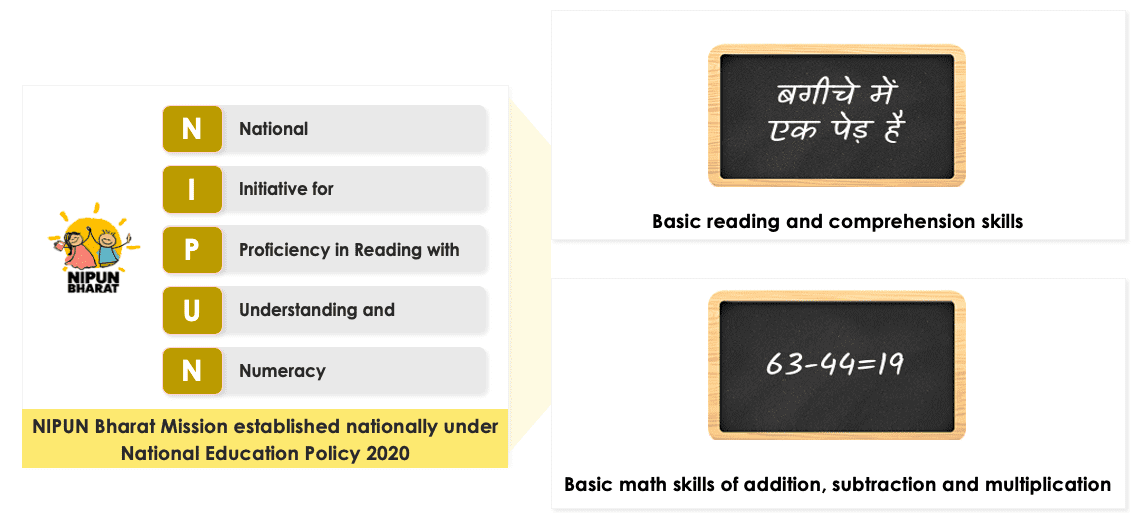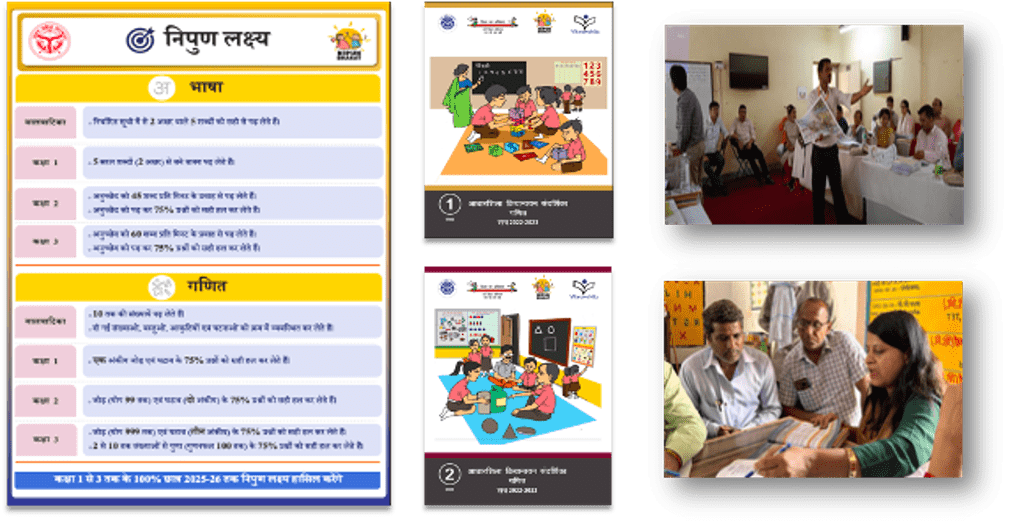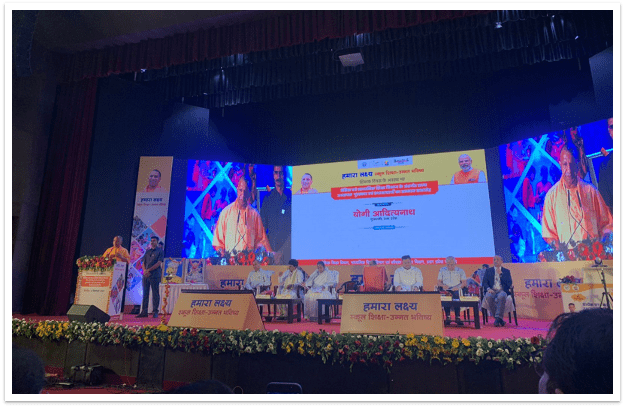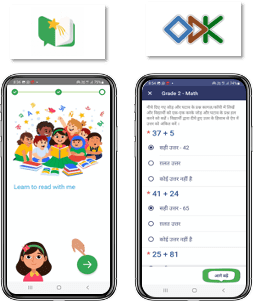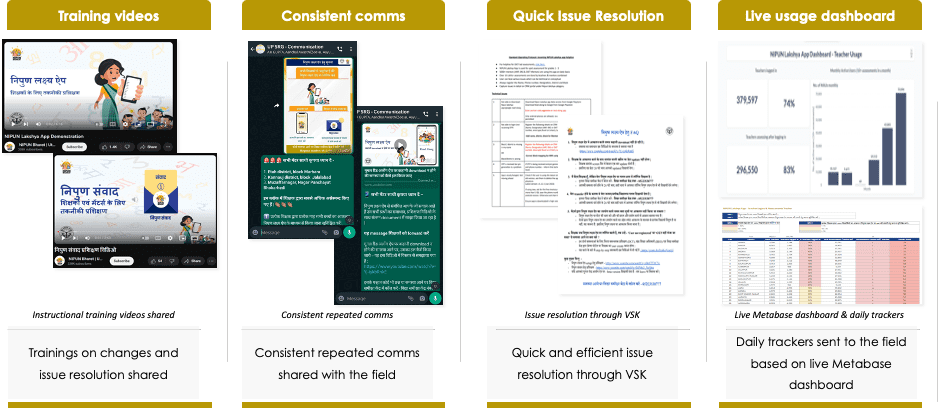Education is the bedrock of a thriving society. It empowers individuals to reach their full potential, fosters innovation, and drives economic growth. However, this journey begins with a strong foundation – Foundational Literacy and Numeracy (FLN) skills acquired in the early years of schooling, as stated by The World Bank's World Development Report 2018. Research suggests that students who struggle with basic reading, writing, and math in their early years (Grades 1-5) often fall behind and experience a growing knowledge gap as they progress through school. This phenomenon, known as the "cumulative deficit model", highlights how weak foundational skills can snowball into later academic struggles.
Furthermore, a 2020 study by UNESCO found that students with strong foundational skills are more likely to stay enrolled in school and complete their education cycle. National data from India's Annual Status of Education Report (ASER) echoes this concern – consistently revealing a concerning disparity in FLN proficiency among Indian school children, particularly in the crucial early years.
For instance, the 2022 ASER Report for Uttar Pradesh, India’s most populous state, paints a grim picture – a significant proportion of the educational disparity in the state lies in the foundational years. In Grade 3, 76% of students are unable to read text meant for Grade 2 and 84% of students lack proficiency in basic subtraction. These numbers underscore a grave problem - they represent a generation whose lifelong learning trajectory and future employability are at risk.
National Mission for Foundational Literacy and Numeracy (FLN)
The state of Uttar Pradesh (UP), with its complex education landscape encompassing 1.3 lakh primary schools, 4.5 lakh teachers and over 1 crore students recognized this challenge head-on. Having already achieved significant progress in school infrastructure through Operation Kayakalp, the state understood the need to shift focus on learning outcomes.
A new chapter began in 2019 when Uttar Pradesh, aligning itself with the UN Sustainable Development Goal 4.6 that advocates for universal literacy and numeracy by 2030, launched Mission Prerna – India's first dedicated Foundational Literacy and Numeracy (FLN) mission. Mission Prerna established clear, measurable objectives for grades 1-5 in Hindi and Math, emphasizing core competencies like word recognition, reading fluency, and basic calculation.
The National Education Policy (NEP) 2020 affirmed Uttar Pradesh’s FLN mission by making FLN a national priority. The Government of India strengthened this commitment, with the Prime Minister launching the 'NIPUN Bharat Mission' in 2021. This mission aimed to achieve universal Foundational Literacy and Numeracy for all school-going children by 2026-27. Having undertaken a host of academic and administrative reforms under Mission Prerna, Uttar Pradesh quickly adopted the NIPUN Bharat Mission, with an ambitious target of achieving the goal of universal FLN by 2025-26, a year ahead of the national target.
Fig: NIPUN Bharat Mission established
The Challenge of Real-Time Monitoring for Teachers
Rashmi ji, a dedicated primary school teacher, exemplifies the 4.5 lakh primary school teachers in Uttar Pradesh who embraced the NIPUN Bharat Mission's vision. Her goal was clear - to make every student in her class NIPUN i.e. proficient in foundational literacy and numeracy competencies as per the NIPUN Lakshya. Equipped with structured pedagogy, including teacher guides, daily lesson plans, workbooks, and other print-rich materials, along with annual training and mentoring visits, and monthly peer learning meetings for support, Rashmi ji embarked on the mission to make her students NIPUN with determination.
Fig: NIPUN Lakshya defined by the State (left); Teacher-learning materials (center); teacher training and mentoring support (right)
Despite her best efforts, Rashmi ji encountered significant challenges in monitoring her students' NIPUN status in real-time:
- Limited feedback: She relied on annual third-party assessments to measure outcomes, which provided only a snapshot of the students' abilities and offered little insight into their day-to-day learning journey. Lacking a medium for immediate feedback, Rashmi ji could not gauge if she was on track to achieve her target.
- Time Constraints: Creating daily practice assessments was quite time-consuming for her, and without standardization, their effectiveness was limited.
- Inaccurate Measurement: Manually measuring reading fluency, a crucial component for students to achieve NIPUN status, was imprecise. This made it difficult for her to identify areas requiring additional help and to implement targeted interventions.
This reliance on traditional, paper-based evaluations hindered effective decision-making and intervention strategies. With outcomes not visible on a day-to-day basis, Rashmi ji solely focused on measurable inputs without really knowing if her efforts were truly translating into NIPUN achievement.
Empowering Teachers with a tool for Real-Time Outcome Measurement
To address this gap and empower teachers with a ‘thermometer’ that could monitor in real time the learning levels of students, the NIPUN Lakshya App (NL App) was launched by the Chief Minister of Uttar Pradesh in September 2022. Unlike traditional methods of assessment, the app allowed for assessments within minutes and gave teachers a view of achievement of competencies like reading fluency and speed which are key competencies within the NIPUN framework.
Fig: Launch of NL App by the Honorable Chief Minister of Uttar Pradesh on 5th Sept 2022
Leveraging Existing Technology for Scalability
The NIPUN Lakshya App ingeniously leveraged existing technology to create a scalable solution. To tackle the challenge of measuring Oral Reading Fluency (ORF), a first-of-its-kind partnership emerged between the Department of Education (Government of Uttar Pradesh) and Google Read Along (GRA). Just like Uber leverages Google Maps for navigation, the NL App harnessed the power of GRA to assess Oral Reading Fluency (ORF) – a critical foundational skill. Understanding the importance of local variations, the GRA model was trained on a massive dataset of Uttar Pradesh dialects, bringing the word recognition error rate from 38% to 1%. This ensured accurate assessments for every child, regardless of their regional background.
NL App's reach went beyond reading fluency. By utilizing ODK technology for data collection, it assessed other critical areas under FLN such as arithmetic ability and reading comprehension. This holistic approach provided teachers with a complete picture of their students' progress, allowing them to personalize learning and ensure every student thrived in their educational journey.
Fig: ORF assessment through Google Read Along (left); Arithmetic assessment through ODK technology (right)
A Rigorous Journey to Scalability
Uttar Pradesh took a phased approach to the rollout and adoption of the NIPUN Lakshya app since the app had to be adopted by 4.5 lakh primary teachers. The rollout began as a pilot program in October 2022 and was rigorously tested amongst 5,000 mentors – a cadre of the state’s best teachers who conduct monthly school visits to provide on-site training and support to teachers. Mentors used the app to conduct spot assessments of 5 students during their school visits and provide feedback to teachers on the learning levels of the students. Active usage by the mentors fed into improving the app’s functionalities through user-centric changes.
This phase also focused on user-friendliness – the app needed to be intuitive enough for teachers with varying levels of technical expertise to navigate comfortably. A playful mascot and engaging voice overs were incorporated to create a more welcoming and interactive experience for students during assessments. Additionally, the number of clicks required to navigate the app was streamlined, making it easier and faster for teachers to conduct assessments.
Another key focus during the pilot program was data integration. The app needed to seamlessly integrate with existing student data management systems. This ensured that valuable information from over 60 lakh students in Grades 1-3 could be incorporated into the app, allowing teachers to track individual student progress over time and compare it to FLN benchmarks.
Finally, the pilot program addressed potential scalability challenges. The initial launch with 5,000 mentors provided valuable insights into server load once the app was rolled out to a much larger user base. This proactive approach led to an eightfold expansion of server capacity, ensuring the app could handle the anticipated surge in usage when launched statewide. The significant drop in server load after this expansion confirmed the effectiveness of these measures in preparing the app for a smooth and efficient rollout to all teachers in Uttar Pradesh.
Fig: Various developments were made to enhance user experience
Post rigorous piloting with mentors, the NIPUN Lakshya App was launched for all 4.5 lakh primary school teachers across Uttar Pradesh in April 2023. This launch represented a massive change management exercise built around communicating the benefits of the app for the teachers and training teachers to secure their buy-in.
Recognizing the importance of user buy-in, a comprehensive communication strategy was implemented. Extensive training sessions were conducted to familiarize teachers with the app's functionalities and address any initial concerns. Additionally, clear and concise communication materials, translated into local languages, were disseminated to ensure every teacher felt confident and equipped to utilize the app effectively.
To resolve teacher’s technical issues in real time, the state’s Integrated Command and Control Center for education, Vidya Samiksha Kendra was leveraged. Teachers could easily report any technical difficulties or glitches they encountered while using the app. A dedicated team at Vidya Samiksha Kendra promptly addressed these issues, providing clear and timely solutions.
Fig: Extensive communication and rigorous tracking were done for uptake of the app
These efforts, combined with the app's user-friendly interface and demonstrable benefits, resulted in an impressive adoption rate. By September 2023, a staggering 90% of the state's primary school teachers – were actively using the NIPUN Lakshya App. This widespread adoption, coupled with a near-perfect app crash rate of less than 1%, underscored the success of the post-pilot launch strategy.
Fig: Widespread adoption of NL App by teachers led to increase of students assessed per month
Beyond Efficiency: A Mindset Shift
The impact was immediate. Teachers could now identify skill gaps early, before they became entrenched problems and allowed for timely and effective remediation. Digitized assessments also freed up time previously spent on time-consuming traditional assessments, allowing teachers to focus on personalized instruction, maximizing their impact in the classroom. The app's user-friendly interface, capturing assessment history for over 60 lakh students, led to widespread adoption across UP's primary schools.
The NIPUN Lakshya App's significance transcended efficiency. It fostered a crucial mindset shift in the education system. The focus moved from simply providing and tracking the usage of resources like academic material to a relentless pursuit of measuring the actual impact on student learning (outcomes). Real-time data placed student learning levels squarely in the spotlight, igniting a spirit of competition and collaboration among teachers, students, and administrators, all striving for the common goal: achieving "NIPUN" (competent) at the earliest.
For Rashmi ji, the app allowed her to assess and track the progress of each student against outcomes, and plan remedial activities accordingly. Measuring oral reading fluency was also simplified, with teachers getting insights into both accuracy and speed of each student. This newfound empowerment translated into a heightened sense of accountability towards making her students achieve the NIPUN Lakshya.
The widespread adoption of the NIPUN Lakshya App has translated into tangible results, the app enabled D.El.Ed students to independently assess 20L students across 68,000 schools in 3 weeks, of which more than 16,000 schools emerged as "NIPUN Vidyalaya" (where 80% of students in each grade were proficient in grade level competencies as per the NIPUN Lakshya).
A Model for Replication
Uttar Pradesh's experience offers a compelling blueprint for transforming education through real-time outcome tracking. This approach empowers teachers with the information they need to make informed decisions, fosters a culture centered on student learning level, and ultimately bridges the gap in foundational skills. This powerful approach can be replicated for Foundational Literacy and Numeracy (FLN) initiatives across India. The app's assessment framework can be adapted to each state's specific FLN goals, ensuring its continued relevance.
Moreover, the app's impact extends beyond education. The NIPUN Lakshya App's brilliance lies in its core principle: empowering the "last mile agents", in this case the 4.5 lakh primary school teachers, with a real-time outcome measurement tool. Its core function – real-time measurement leading to an outcome-oriented approach – can be leveraged for diverse initiatives. Similar apps can be used in healthcare to track patient progress or in social welfare programs to measure intervention effectiveness. The NIPUN Lakshya App offers a replicable framework for a systemic shift, prioritizing data-driven decision making and ultimately, improving outcomes across various sectors.
The impact of the NIPUN Lakshya App serves as a beacon, not just for education initiatives across India, but for any field seeking to leverage data-driven decision making for transformative change.
This blog is part of the Amrit Series, where we bring to you success stories of large scale impact through our work across domains and states. You can learn more about NIPUN Lakshya App here.

